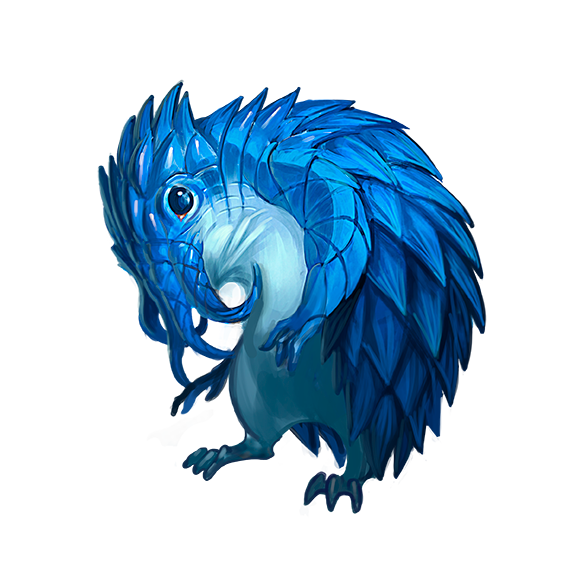VasporanSource Alien Archive 4 pg. 132
Vasporans are ambush predators capable of molting at highly accelerated rates. They use this molting ability for both offense and defense. A vasporan can molt select parts of its body to create large, balloon-like sacs it can use to catch air currents to fly. In environments where wind is minimal or unreliable, a vasporan can also produce internal gases to fill these sacs and thus create independent lift. The vasporan uses its flight to ambush creatures from a great height. In cases when its ambush fails or the vasporan itself is the subject of an attack, it molts as a means to escape injury. A vasporan can produce a reactive agent that causes its molted skin to instantly harden when exposed to air. This tough, molted shell serves as a distraction and can even intercept an attack in dire situations.
A vasporan’s highly sensitive sense of smell warns it of approaching predators, and it’s also useful in detecting prey from great distances between various layers of thick gases. In addition using their molting capabilities to escape, vasporans molt their shells as a distraction. In most cases, vasporans molt after a failed ambush to make it difficult for the would-be prey to know where the vasporans have gone. The creatures also mark their territories with dozens of brittle moltings, both as a warning to other creatures and as an early detection system—a vasporan shell makes a distinct crackling and popping sound when it’s stepped on or destroyed that can alert the former owner when danger is approaching.
In recent years, xenobiologists have posited that some particularly hardy specimens are able to produce a unique mix of gases that can both accelerate them to the high speeds needed to reach nearby planets and provide them with breathable air on the journey. Such exceptional vasporans are thought to be rare, but vasporan broods on other planets are nonetheless becoming more common, and many species are now having to learn to contend with these dangerous creatures.
A typical vasporan is 11 feet long and weighs 750 pounds.Aliens in the "Vasporan" FamilySource Alien Archive 4 pg. 132Vasporan CR 9 XP 6,400 XP 6,400
N Large animal
Init +3; Senses blindsense (scent) 90 ft., low-light vision;; Perception +17
DefenseHP 145
EAC 22; KAC 24
Fort +13; Ref +13; Will +8
Defensive Abilities flash molt
OffenseSpeed 20 ft., climb 20 ft., fly 40 ft. (Ex, average)
Melee claw +21 (2d10+13 S)
Ranged spines +18 (5d4+9 P)
Space 10 ft.; Reach 10 ft.
Offensive Abilities ambush strikeStatisticsSTR +4; DEX +3; CON +6; INT -4; WIS +1; CHA +0
Skills Acrobatics +17, Athletics +17 (+25 to climb), Stealth +22
Other Abilities autotomous flight, gaseous fleshEcologyEnvironment any sky (Old Ustavia)
Organization solitary or pairSpecial AbilitiesAmbush Strike (Ex) A vasporan deals 2d8 additional damage against any creature unaware of it.
Autotomous Flight (Ex) A vasporan can molt specific parts of its skin to create sacs that catch wind currents or become filled with gases. In winds higher than a light wind, a vasporan’s fly speed increases by 15 feet.
Flash Molt (Ex) As a reaction when hit by an attack that targets its KAC, a vasporan can molt its flesh to attempt to avoid the attack. The vasporan gains hardness 20 against the attack’s damage and can take a guarded step. The vasporan can’t use flash molt again for 1d4 rounds.
Gaseous Flesh (Ex) A vasporan’s flesh contains pockets of volatile gases trapped just beneath the surface. These pockets ignite and explode when a vasporan is hit by a melee attack that deals fire damage. This deals 2d6 fire damage to creatures adjacent to the vasporan. A creature can avoid this damage with a successful DC 16 Reflex save.
Spines (Ex) As a standard action, a vasporan can eject thin spines as a ranged attack that targets KAC and has a range increment of 30 feet.
|